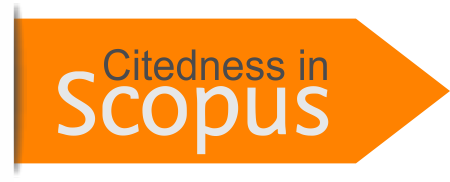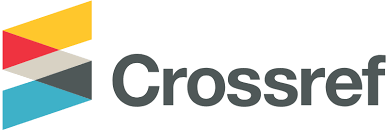Analysis of the Difficulty of Solving Physics Problems During Online Learning at SMA Negeri 1 Tikep Against the Online Media Used
Abstract
Keywords
Full Text:
PDFReferences
Khasanah, A. (2015). Pemasaran jasa pendidikan sebagai strategi peningkatan mutu di SD Alam Baturraden. El-Tarbawi, 8(2), 161-176.
Anatasya, E., Cahyani, K., Ulfiah, Z., & Windayana, H. (2022). Pengembangan Mutu Pendidikan Ditinjau dari Pemenuhan Kebutuhan Sarana dan Prasarana Pendidikan. Aulad: Journal on Early Childhood, 4(3), 306-311.
Napsawati, N. (2020). Analisis situasi pembelajaran IPA Fisika dengan metode daring di tengah wabah covid-19. Karst: jurnal pendidikan fisika dan terapannya, 3(1), 6-12.
Jannah, R., & Haryadi, R. (2020). Pembelajaran Daring Fisika Siswa Sekolah Menengah Atas (SMA). Edumaspul: Jurnal Pendidikan, 4(2), 355-363.
Fitriani, R. (2021). Kesiapan Mahasiswa Calon Guru Mengikuti Pembelajaran Fisika Secara Daring Saat Pandemi Covid-19. Indonesian Journal Of Intellectual Publication, 1(2), 90-96.
Hanifah, H., Salsabila, U. H., Ghazali, I., & Khoirunnisa, N. (2020). Strategi Alternatif Pembelajaran Daring Mahasiswa Pendidikan Agama Islam Pada Masa Pandemi Covid-19. JURNAL EDUSCIENCE (JES), 7(2), 68-77.
Hidayat, M. T., Hasim, W., & Hamzah, A. (2020). Pembelajaran Daring Selama Pandemi Covid-19: Solusi atau Masalah Baru dalam Pembelajaran?. Journal Civics & Social Studies, 4(2), 47-56.
Tanuwijaya, N. S., & Tambunan, W. (2021). Alternatif solusi model pembelajaran untuk mengatasi resiko penurunan capaian belajar dalam pembelajaran tatap muka terbatas di masa pandemic covid 19. Jurnal Manajemen Pendidikan, 10(2), 80-90.
Rahma, R., & Safarati, N. (2021). Dampak Pembelajaran Daring Terhadap Motivasi Belajar Mahasiswa selama Pandemic Covid 19. Genta Mulia: Jurnal Ilmiah Pendidikan, 12(1), 113-118.
Zulkifli, A., & Mansyur, J. (2021). Kesalahan Siswa Dalam Mengerjakan Soal Momentum Dan Impuls. JPFT (Jurnal Pendidikan Fisika Tadulako Online), 9(2), 60-65.
Darsa, D. Y., Nasir, M., & Rusydi, R. (2020). Analisis Kesulitan Peserta Didik dalam Menyelesaikan Soal-Soal Kalor Menggunakan Teori Polya di SMA Negeri 3 Banda Aceh. Jurnal Phi; Jurnal Pendidikan Fisika dan Terapan, 2019(2), 24-30.
Firmansyah, M., & Masrun, M. (2021). Esensi Perbedaan Metode Kualitatif Dan Kuantitatif. Elastisitas-Jurnal Ekonomi Pembangunan, 3(2), 156-159.
DOI: https://doi.org/10.46336/ijeer.v1i4.247
Refbacks
- There are currently no refbacks.
Copyright (c) 2022 Jahiruddin Jahiruddin
Published By:
IJEER: Jalan Riung Ampuh No. 3, Riung Bandung, Kota Bandung 40295, Jawa Barat, Indonesia
IJEER Indexed By:
 This work is licensed under a Creative Commons Attribution 4.0 International License.
This work is licensed under a Creative Commons Attribution 4.0 International License.









